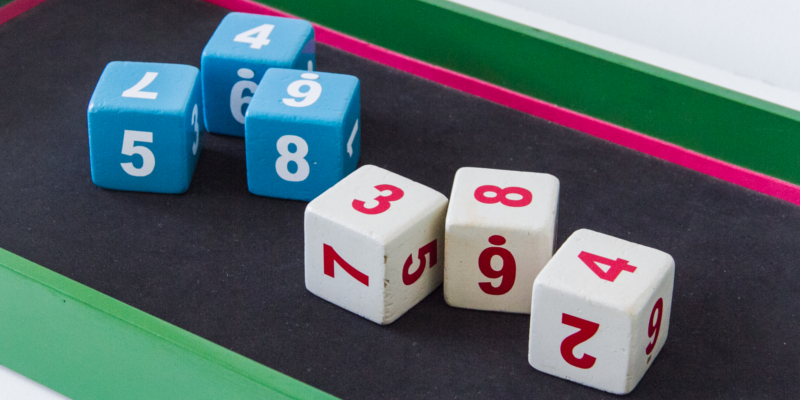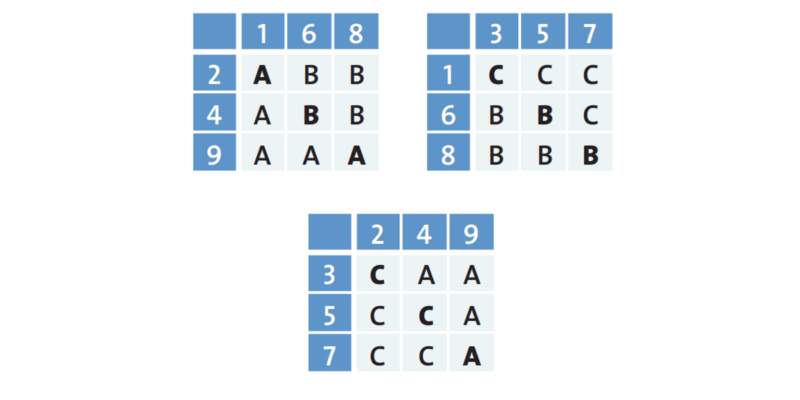INTRANSITIVE DICES

If A beats B and B beats C, can we conclude that A beats C?
Despite seeming “reasonable”, we have many examples where this does not occur. One of them is the game of “joquempô” (rock-paper-scissors). Football also provides examples: in the Brazilian championships from 2009 to 2013, São Paulo beat Atlético 6 times and lost 3; Atlético won 4 from Fluminense and lost 3; and Fluminense won 5 against São Paulo and lost 3. Who was the best among the three?
Here the example is with this data. To verify this, see the possibilities of results in two-by-two plays in the tables to the side. What fails in this data is the transitive property. This seems bizarre because we have this property built into our reasoning. In real numbers, for example, if x < y and y < z then x < z.

